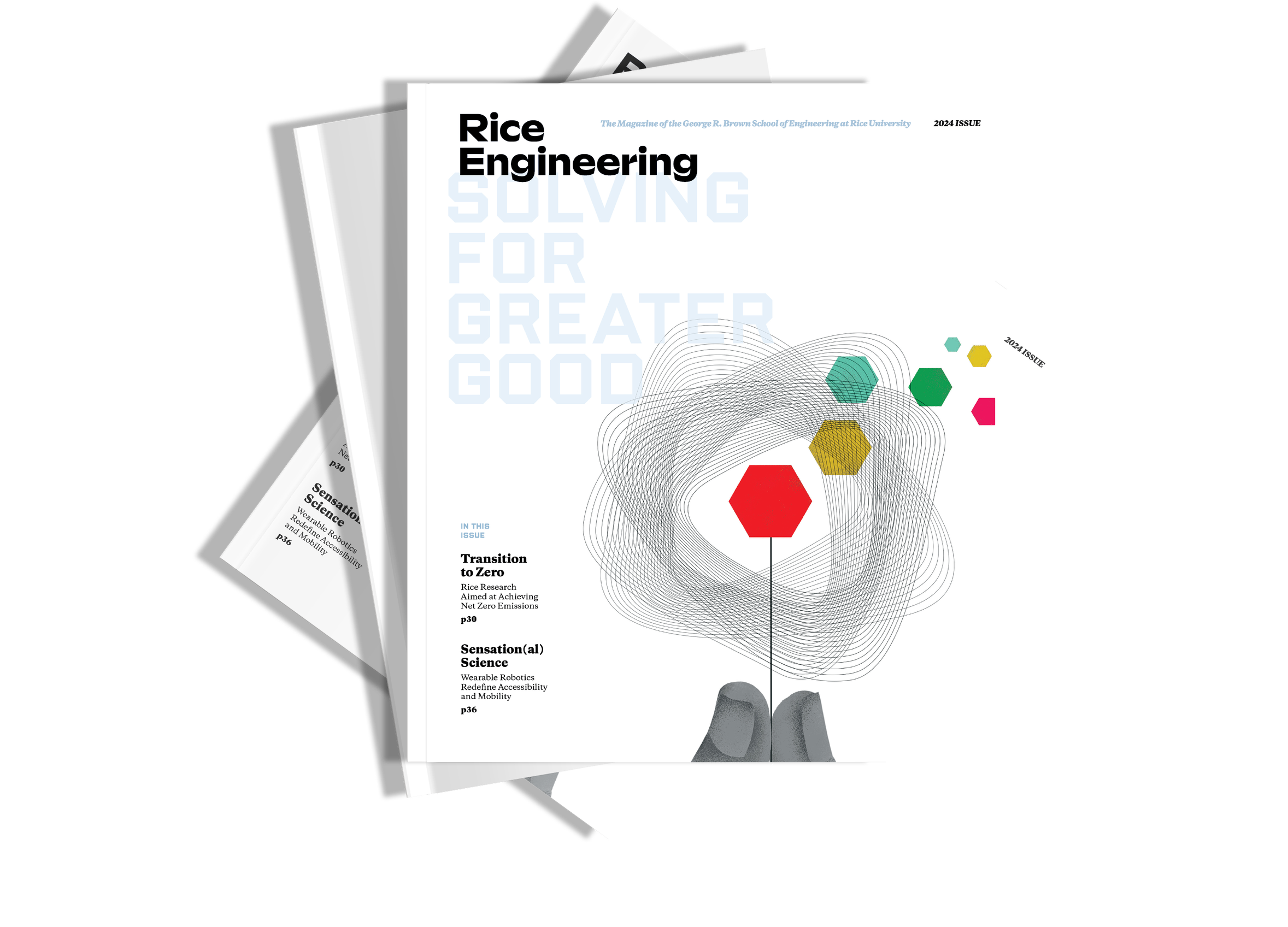
The spring 2024 issue of Rice Engineering Magazine is here!
At Rice Engineering, we are driven by a passion for innovation and a commitment to responsible engineering practices. It’s with great excitement that we unveil the new design of Rice Engineering magazine, which underscores our dedication to excellence in research, education, and service. The 2023-24 issue is full of news about how Rice Engineering is solving for greater good.
Equalizing Wireless Access

In today’s global society, access to high-speed internet is crucial for providing communities with educational and commercial opportunities. However, over half the population lacks high-speed broadband communications due to the high cost of fiber and satellite and the limited reach and capacity of cellular wireless technologies.
Rice researchers are working to change that. Through a $1.9 million grant from the U.S. Department of Commerce’s National Telecommunications and Information Administration, a team led by Rahman Doost-Mohammady, assistant research professor of electrical and computer engineering, is developing a testing framework to assess the stability, interoperability, energy efficiency and communication performance of software-based 5G radio access networks (RANs).
This testing is essential as the trend toward software-based wireless products grows, replacing traditional black-box hardware made by large companies. The transition has the potential to lower the barrier to entry in the telecommunications industry and opens up opportunities for smaller companies to introduce products to market faster and increase competition.
The team, which includes Ashutosh Sabharwal and Santiago Segarra, is developing a testing framework, ETHOS, to help ensure these products work reliably when deployed in the field. Unlike current testing methodologies for wireless products, ETHOS will not only evaluate communication performance but also consider the impact of computing environments and the intricacies of machine learning on RAN software.
“The implications of our work are far-reaching,” said Doost-Mohammady. “Deploying software instead of hardware will significantly reduce the development cycle of the components used in telecom infrastructure, reducing costs for telecom operators. This, in turn, reduces costs for subscribers. It will also allow operators to invest more in underserved areas and build networks best suited to the needs of those communities.”
